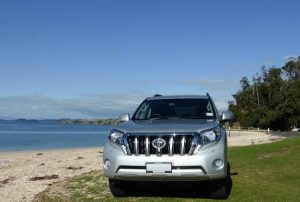Driving on the beach is both fun and gets you to places that can be just that little bit more remote with less people. There are great fishing and camping spots, too, plus you can carry gear that would be heavy if on foot, like for kite surfing.
How to drive on a beach
Know the rules
First check with Office of Environment and Heritage’s beach vehicle permits page. If you can’t find what you need there, check with the local authority whether you are a) allowed to drive on the beach at all and b) if so, do you need a permit. For example, Coffs Harbour has a page telling you which beaches you’re allowed to drive on and what the restrictions are. Some beaches have seasonal closures or are open only a certain number of hours during the day. If you want to drive on Ballina beaches then you’ll need a permit, as you will with the excellent Stockton Bight sand dunes just a couple of hours north of Sydney.
The rules of the road almost always apply on beaches but there are reduced speed limits in NSW of 20km/h within 100m of pedestrians or other vehicles and 40km/h at other times. Pedestrians always have right-of way. You must not drive over shell accumulations or vegetation.
Check any signage as you drive onto the beach as there may be other rules and regulations you’re not aware of.
Insurance

4WD vehicles are fine for beach use; don’t try it with a two-wheel drive car
Does your insurance policy cover you for driving on the beach? You might find that it doesn’t at all, or doesn’t unless it’s a specific type of vehicle (e.g. 4WD designed for off-road use). It’s highly likely that if you get stuck and the tide swamps your vehicle that your insurance won’t pay.
Respecting nature
Always stay off the dunes unless there are specific tracks, and never drive on the vegetation as that’s what holds the dunes together and you’ll cause erosion. Rare reptiles, insects and birds live in the dunes and above the high water line, and driving in these areas creates problems for them.
Don’t leave food and fish remains around as these encourage rats.
Check to see whether dogs are banned on the beach as this will include in your vehicle. Remember that dogs should never be left in your vehicle on a hot day.
Check the tide times before you leave. It’s best to travel two hours either side of low tide. Many beaches become impassable at high tide, and difficult to pass at mid tide because the sand is so soft.
Setting up your vehicle
Deflate your tyres down to around 25psi. You’ll need a pressure gauge to check it. When you leave the beach you’ll need a pump to pump them back up to road-going pressure again.
Take a spade and a rope in case you get stuck. If you do get stuck, don’t spin the wheels otherwise you’ll dig it in until the bottom of your vehicle rests on the sand. Dig out a channel in front of or behind each wheel (whichever way is downhill). Dig out the sand from underneath your vehicle to give it more ground clearance. If you’re really stuck, lower the pressure to 20psi; much more than this and you will risk the tyre coming off the rim.
Keep your lights on at all times to improve visibility. Bear in mind that if you are driving in dunes that other vehicles might be hidden. A flag on a flexible pole can help other drivers see you.
Take out any unnecessary items so that your vehicle isn’t as heavy. This can reduce the chances of you getting bogged down.
Let other people know your intentions so that they can raise the alarm if something happens. Take extra water and food in case you end up having to spend the night out there.
Once you leave the beach remember to wash your vehicle down thoroughly as salt water and salty sand is highly corrosive.
Driving on the beach
Take care driving over any dunes that lead to the beach as this is a time where you can get stuck as you will be driving uphill over softer sand.
Once on the beach, drive nearer the water where the sand is harder; don’t drive in the soft, loose sand as this is also where animals live and people like to sunbathe. Keep a look out for deep puddles which can rip your wheel off, areas of quicksand, and large pieces of driftwood that have washed onto the beach. The consistency of the sand can change quickly from hard to soft and in these situations it’s important you keep your momentum; from experience, having your foot flat to the floor while doing 5km/h as you’re desperate not to stop because it suddenly turned boggy is not a good place to be in.
Pedestrians always have right-of-way. Watch out for sunbathers and people who might run out of the water. Watch out for fishing lines.
Observe the speed limits. Police patrol some beaches and a fine will ruin your day.
Avoid sharp turns as your wheels can dig into the soft sand and cause you to flip over.
When you park, face downhill towards the sea. This means that getting going again is easier and you also can see the approaching water so you don’t leave it too late to get back.
